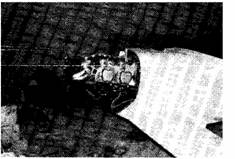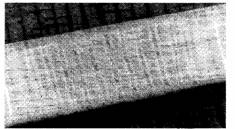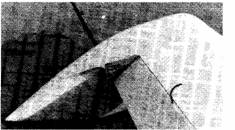
Dave Elliot's Continental 0-200 powered Q2.

As of this writing at least 2 Continental powered Q2s are flying. Initial results are very encouraging. Cort Graham Q2 (#2196) flew chase behind the first on its 2nd flight.
Cort was flying his Bonanza which has all of the Smith Speed conversions and will do an honest 215 mph. He reports that the Q2 left him behind rapidly.
Testing on the second 100 HP, O-200 powered Q2 at Mojave, indicates speeds in the 230+ mph range and climb in the 2,000 ft/mm range.
When we first considered the Continental conversion, we envisioned using a stripped C-85 version (no starter or alternator). This weighs about the same as a Revmaster with options. As more and more Q2s began to fly, we found that most were being constructed on the heavy side and were equipped with radios and instruments. We looked back on other homehuilt programs and realized that if we approved a stripped Continental version, most people would install starters and alternators anyway.
What we decided to do was go back to the drawing board and see what could be done to raise the gross weight and, particularly, the forward cg loading of the aircraft. One approach looked at was to increase the area, span, and aspect ratio of the front wing. Another option was to move the front wing forward. A third was to find an airfoil that developed more lift. The third approach was selected, as we felt this was the most conservative change we could make with regard to stall-spin and stability criteria. Finding an airfoil that generates as much lift as | the standard GU section used on the Q2 was no easy task. All canard aircraft we are aware of load their canards heavily. Since the wing area of a canard aircraft is split between two wings, each wing is of a smaller size than that of a single wing aircraft. This means that canard aircraft tend to have small chords on their canards. At sea level, the Q2 canard is operating at a Reynolds Number of about I million, at stall. Reynolds Number is a dimensionless quantity relating to inertia and viscous air forces. This term is roughly proportional to the chord of an airfoil and the velocity. Most wind tunnel data on NACA and NASA airfoils, until recently, didn’t go below 2 to 3 million. So designers of small aircraft (homebuilts) operating in this range were basically on their own. What’s so important about Reynolds Number?
As a rule, the lower the Reynolds Number, the lower the maximum lift generated at stall. This drop in lift is not always linear either. A classic example is the NASA LS (1)-0417, also known as the GAW-1. This airfoil produced more lift than anything else going, when it came out, but it was only tested in the wind tunnel from a Reynolds Number of 2 million and up. Users found out that its lift decayed rapidly below this number The same was found to be true with most other airfoils available. One exception was the GU section. It was a high performance airfoil developed for man-powered flight by the University of Glasgow, Scotland. This airfoil, or variations of it, are used on most, if not all of the canard aircraft on the homebuilt market today, including the Quickie and Q2. The advantages of this airfoil are high lift at lower Reynolds Numbers and fairly low drag at cruise.
Disadvantages are:
| a. | | Less tolerant of manufacturing errors. | | b. | | Unless surface waviness is closely controlled, performance degradation results. | | c. | | High nose-down pitching moment (aft loading), which results in increased trim drag penalty. | | d. | | Performance degradation in rain or with a build-up of hugs on the leading edges. |  |  |  |
Recently, NASA began testing their | airfoils down to a Reynolds Number of 1 million. One of these newer airfoils looked promising enough for us to give it a try. After Oshkosh we designed and built a new canard for 81QA using this new airfoil. We built up the new canard complete with wheel pants, control parts, and brakes.
This allowed us to be able to “quick change” the canards. Dave and Gene jigged up 81QA, carefully dremeled the old canard off, and installed the new one in one day. A level block was installed on the old canard just in case the new one was not successful.
Flight test of the new canard airfoil began in mid October.
Preliminary results are as follows:
| 1. | | Increased lift over the original airfoil. | | 2. | | Lower drag at high aircraft angles of attack. | | 3. | | Lower drag during high g maneuvers (large elevator deflections). | | 4. | | We were able to carry a much further fwd cg (3”). | | 5. | | Similar stall characteristics to original. | | 6. | | Negligible lift loss with leading edge roughness (bugs). | | 7. | | No significant trim change in light to moderate rain. (No heavy rain has
been encountered yet, but we expect the results to be the same.) |  |  |  |

Shows Roughness added to the airfoil from leading edge back tp 40% of the chord. Roughness is added to both the top and bottom. This grossly exagerates a typical load of bugs. The test results indicate no significant change in performance.

Elevator position indicator on the new canard airfoil. |

